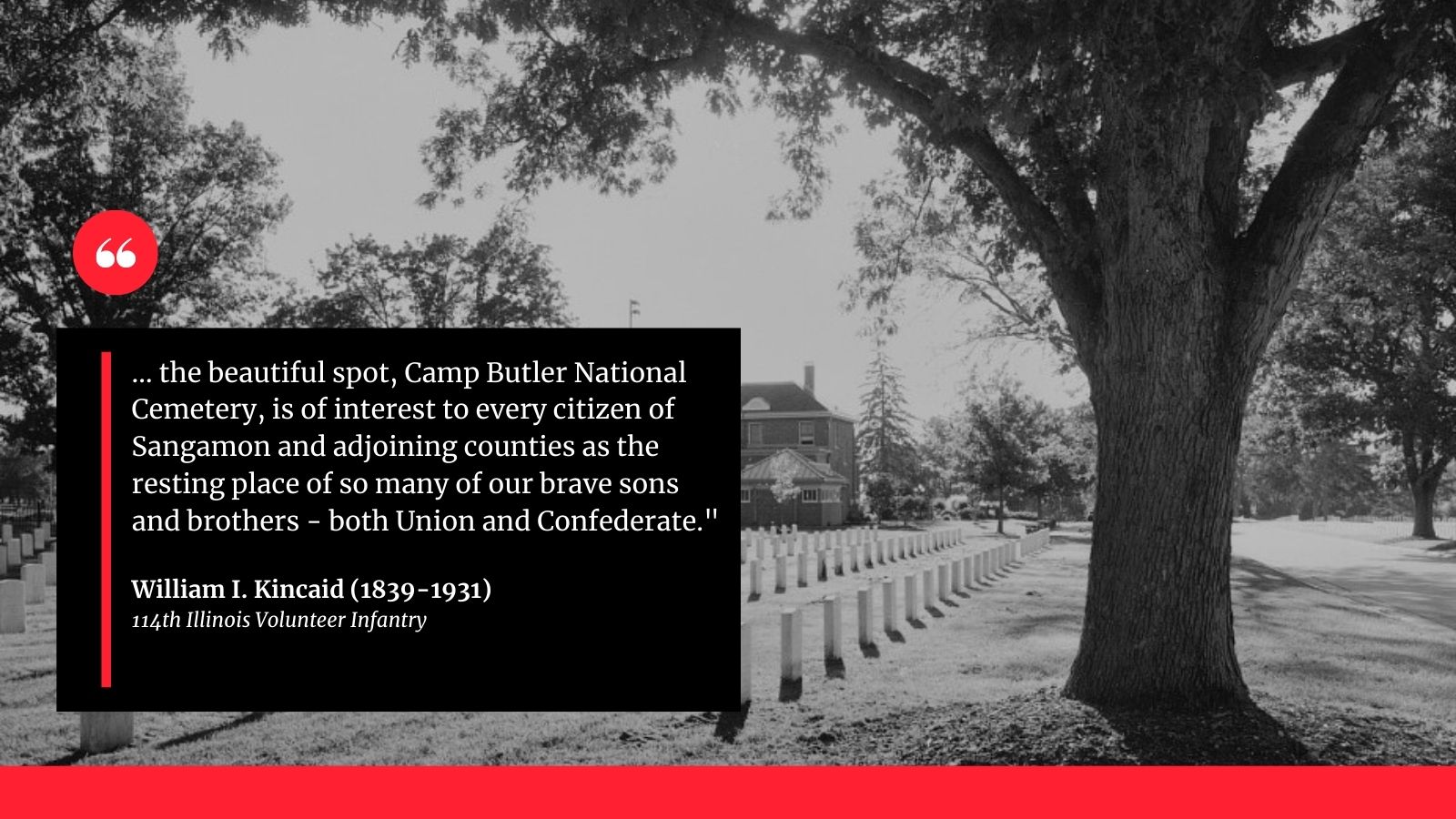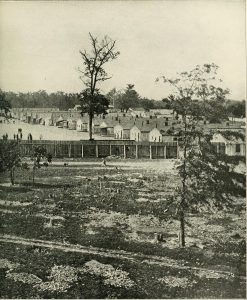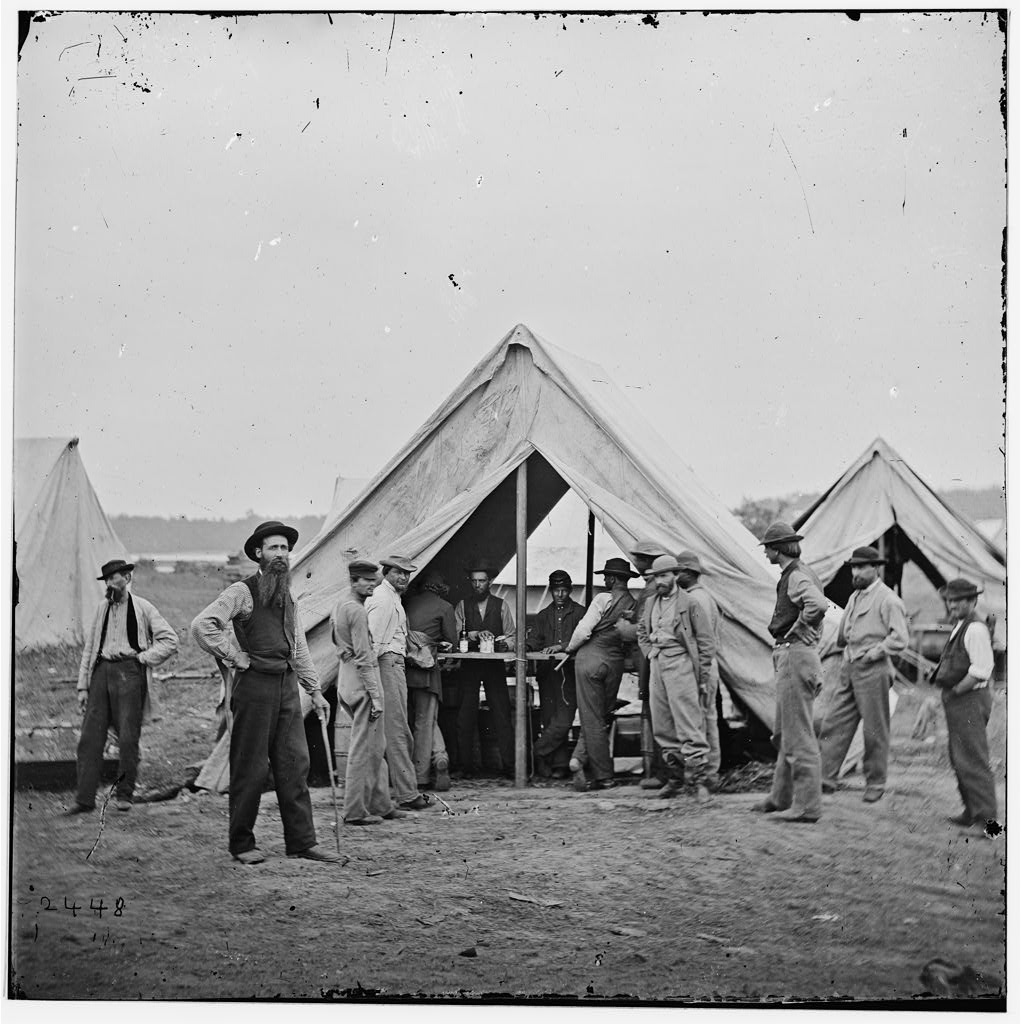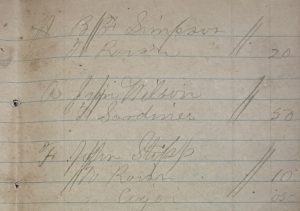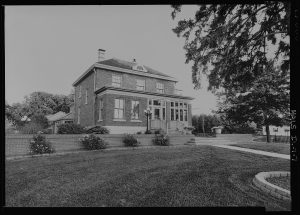The Establishment of Camp Butler
On April 15, 1861, Abraham Lincoln’s Secretary of War, Simon Cameron, sent a telegram to Illinois Governor Richard Yates reading: “Call made on you by to-nights mail, for six regiments of militia, for immediate service.” The Civil War had begun, and the State of Illinois was responsible for organizing men to fight in the Union army. At the time, there were no organized militias within Illinois, and the state’s government began planning military training camps. On August 2, 1861, the State of Illinois announced the construction of a Union army camp about six miles outside of Springfield named Camp Butler, after Illinois State Treasurer William Butler. The first troops arrived within the week.
Camp Butler would become the second-largest military training camp in Illinois during the Civil War. Five thousand men had arrived to begin organizing and training by September 1861. Each regiment in Camp Butler was given a station inside the camp, including barracks and a separate canteen. Most troops who mustered in at Camp Butler spent less than two months training before they were sent to battle.
Civil War Sutlers
Illinois Governor Richard Yates appointed the first sutler at Camp Butler, H.C. Myers, as the first troops began to arrive. Sutlers were civilian merchants who sold goods such as food, tobacco, and coffee to Civil War soldiers. Myers, the owner of a popular ice cream parlor in Springfield, saw so much business in the summer of 1861 that the camp hired more sutlers almost immediately. While not enlisted in the army, men like Myers were officially appointed to the position. Eventually, many Civil War sutlers would travel with a specific regiment.
One such sutler was an Illinois man named Morgan Bond. From 1862 to 1865, Bond traveled with the 94th Illinois Infantry through Missouri, Arkansas, Mississippi, Alabama, and Texas. His account book, housed at IHLC (MS 1067) and pictured here, shows two of the most popular items Bond sold: sardines and cigars.
On May 4, 1864, a Civil War sutler named Sam wrote to his friend from Camp Butler. Sam told his friend he made $70 the day before, which would be equivalent to over $1,000 in 2022. He also mentioned plans to go to a circus in Springfield soon. This letter is preserved and accessible at IHLC, Camp Butler Sutler Letter, 1864 (MS 1068).
Soldiers’ Stories from Camp Butler, Preserved at IHLC
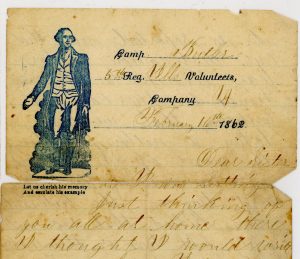
James R. Page served in the 5th Illinois Calvary from 1861-1863, mustering in at Camp Butler. On February 19, 1862, he wrote a letter to his family back home saying, “there is to be three thousand prisoners here in a few days that were taken at fort Donelson our losses there wear terable [misspellings in the original].” The prisoners Page mentioned were the first Confederate soldiers imprisoned at the camp, taken by General Ulysses S. Grant from Fort Donelson, Tennessee. Camp Butler served as a prisoner-of-war camp for thirteen months, during which over 800 Confederate soldiers died due to battle wounds and rapidly spreading illnesses such as typhoid.
The Page Family Papers (MS173) also include 19th-century images of Civil War soldiers and memorabilia such as a Grant Campaign Pin. James R. Page later died at 23 years old in Vicksburg, Mississippi, due to the rampant spread of disease through his regiment. By the end of the Civil War, Page’s regiment had lost 33 men to battle and 414 to disease.
On July 12, 1865, another Illinois soldier named Lucius Langworthy wrote a letter to his sister Sarah from Camp Butler. He described how joyful he was about being discharged soon. He wrote, “My soldiering days are nearly finished. It will be but a very few days until we are discharged from the service of Uncle Sam… The day that I have been longing for so long is soon to arrive.” Langworthy also told his sister about how the Governor of Illinois, Richard Oglesby, had given a speech to every regiment the night before. Oglesby’s speech to Langworthy’s unit, the 12th Illinois Volunteer Infantry, had brought Langworthy to tears. Lucius Langworthy’s letter from Camp Butler is a part of the Taylor-Langworthy Families’ Papers at IHLC.
From 1861 to 1865, over 200,000 soldiers passed through Camp Butler. After Robert E. Lee surrendered the last major Confederate army to Ulysses S. Grant in 1865, Camp Butler remained active as a muster-out site and a hospital. Wounded veterans were cared for at Camp Butler until it officially closed in June 1866.
After the War
Today, Camp Butler National Cemetery is the final resting place of Union and Confederate soldiers and veterans of later United States military conflicts. Congress established Camp Butler as one of fourteen original National Cemeteries in 1862. Camp Butler National Cemetery was listed on the National Register of Historic Places in 1997 and remains open to the public today.
Image Sources
Figure 3: IHLC MS 1067, Morgan Bond Sutler Account Book, circa 1862-1865.
Figure 4: IHLC MS 173, Page Family Papers, 1861-1865, circa 1870, and 1899. James Page to Sister, February 16, 1862.
Figure 5: Historic American Landscapes Survey, Creator, and U.S. Department Of Veterans Affairs. Camp Butler National Cemetery, Camp Butler Road, Springfield, Sangamon County, IL. Accessed through loc.gov.
Works Cited
Kincaid, William I. “Camp Butler.” Journal of the Illinois State Historical Society (1908-1984) 14, no. 3/4 (1921): 382–85.
National Cemetery Administration. “Facts: NCA History and Development .” VA.gov: U.S. Department of Veterans Affairs, August 13, 2021.
Sheppley, Helen Edith. “Camp Butler in the Civil War Days.” Journal of the Illinois State Historical Society (1908-1984) 25, no. 4 (1933): 285–317.
Find at IHLC
Heyworth, Kathleen., and Richard E. Hart. Camp Butler : a Civil War Story. Springfield, IL: Elijah Iles Foundation, 2013. [973.74730922 H519c]
Illinois Civil War Sketches. Springfield: Civil War Centennial Commission, 1963. [977.3 Il6312]
Praus, Alexis A. Confederate Soldiers and Sailors Who Died as Prisoners of War at Camp Butler, Illinois, 1862-1865. Kalamazoo, Mich: Edgar Gray Publications, 1973. [973.76 P89C]
Walton, Clyde C. Illinois and the Civil War. Springfield, Ill: Civil War Centennial Commission, 1961. [977.303 W173il]
MS 1068 – Camp Butler (Springfield, Ill.) Sutler Letter, 1864
MS 987 – Henry W. Funk Letters, 1862-1900
MS 165 – William W. Orme Papers, 1952-1894
MS 311 – Taylor-Langworthy Families Papers, 1817-1895, 1912

